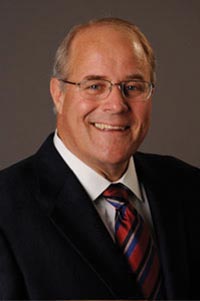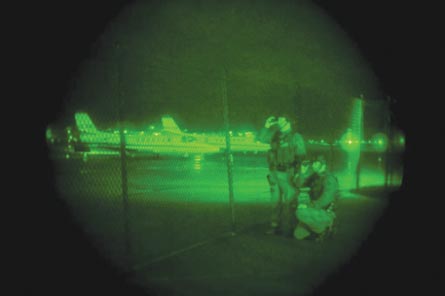US engineering company ITT was not a mover in the Top 100, remaining at number 19, but 2010 has brought big changes inside its $6.3 billion defence electronics arm, which caters to military and government markets.
By executive decree on 5 January, seven business units divided mainly along standalone product lines were absorbed into three new "value centres": electronic systems, geospatial systems and information systems.
|
|---|
Perhaps the most dramatic change came in the new geospatial systems unit, which combined the seemingly unlikely pairing of the space business in Rochester, New York, and the night vision goggles unit in Roanoke, Virginia, into the same division.
Both units, however, are fundamentally based on imaging systems, and the move coincides with the company's strategic push to chase the rapidly growing market for airborne intelligence, surveillance and reconnaissance.
ITT has deep roots in space-based observation systems, which require a high degree of on-board processing to manage massive loads of data collected by sensors tracking objects the size of planets.
Meanwhile, US military officials have developed a need for wide area airborne surveillance systems and hyperspectral sensors. Both are cameras that generate vast amounts of data. Transmitting all of that data to the ground requires lots of bandwidth. Ideally, most of the data could be processed on board the aircraft, with only a tiny fraction needing to be sent to the ground or downloaded on to a larger network.
ITT's newly formed geospatial systems division intends to apply its background on space networks to this emerging, adjacent market. The company is already supplying wide-area Gorgon Stare pods to prime contractor Sierra Nevada, which delivers the systems to the US Air Force for integration on the General Atomics MQ-9 Reaper. The division is also teamed with Lawrence Livermore National Laboratory on a mid-wave and long-wave hyperspectral sensor, says imaging scientist Bernard Brower.
Meanwhile, the Electronics Systems value centre is being formed with pieces from the former communications systems unit in Fort Wayne, Indiana and elements of the previous intelligence and information warfare unit in Nashua, New Hampshire.
The goal for each of the three new units is to combine technical expertise for new integrated products.
- Top 100 rank 19
- HQ White Plains, New York, USA
- Aero revenues $6,585m
- Sales growth -2.6%
- Operating margin 8.3%
- ROCE 10.7%
- Employees 40,200
- CEO Steven Loranger
|
|---|
Source: Flight International






















